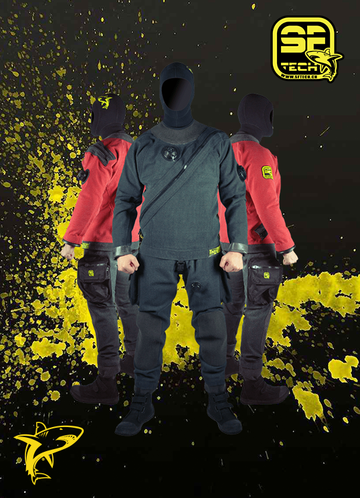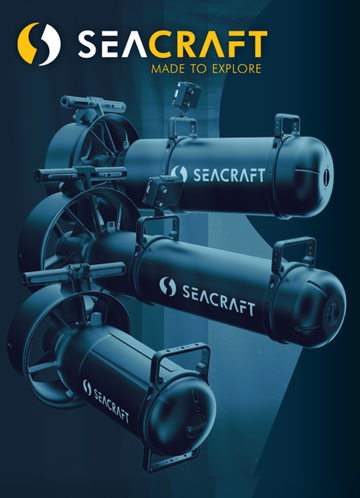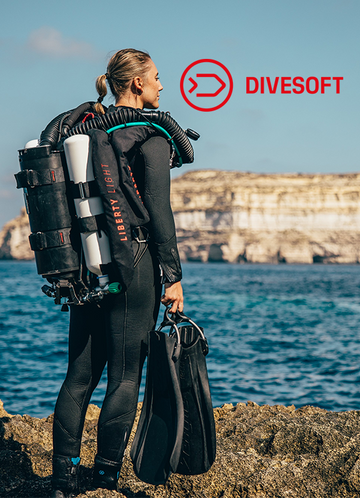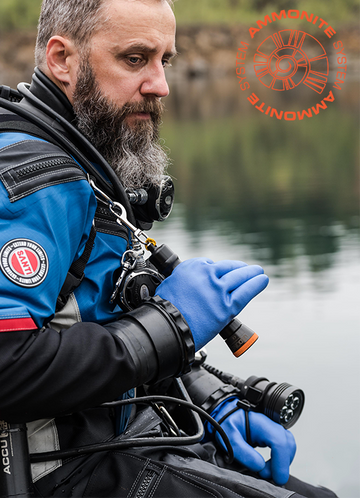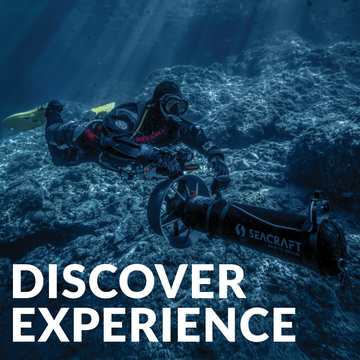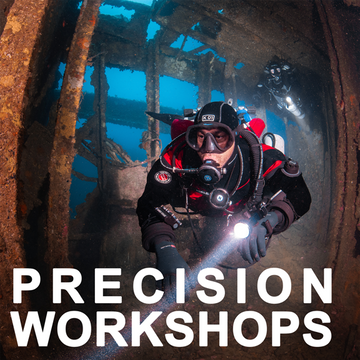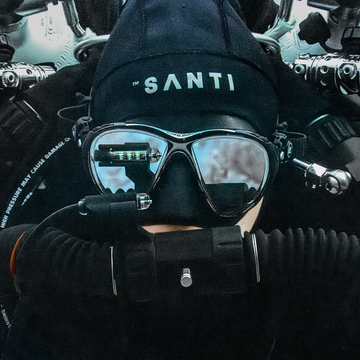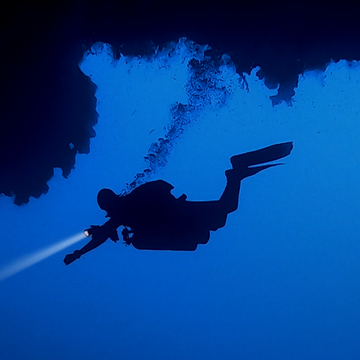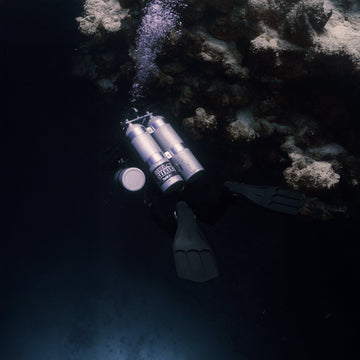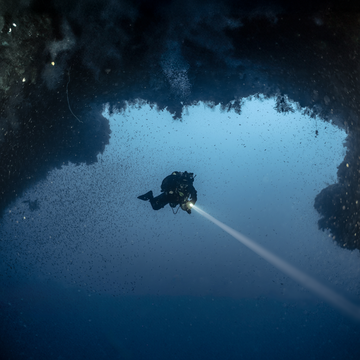Closed-Circuit Rebreathers (CCRs) have transformed the world of diving. They allow divers to extend bottom times, explore deeper or more remote environments, and do so with minimal disturbance to marine life thanks to bubble-free operation. For explorers, filmmakers, and scientific divers, CCRs are an invaluable tool.
But while their advantages are undeniable, CCRs also introduce greater complexity and, with it, greater risk. Unlike open-circuit systems, a CCR is not just delivering gas—it is managing it dynamically. A failure in monitoring, preparation, or response can have catastrophic outcomes.
Analyses of CCR fatalities reveal patterns. The same issues appear repeatedly across investigations, often in combination. According to studies such as Fock, A.W. “Analysis of recreational closed-circuit rebreather deaths 1998–2010” and the Rebreather Fatality Investigation report (Diving Committee, 2012), most accidents can be traced to seven recurring causes. Understanding them is the first step toward prevention.
1. Hypoxia (Low Oxygen Levels)
Hypoxia is the single most common cause of death in CCR diving. It occurs when the partial pressure of oxygen (PO₂) in the loop drops below what the body needs. Causes include:
- Equipment malfunctions (oxygen addition system failure, sensor drift or failure).
- Human error (forgetting to switch on oxygen, or starting with low supplu, skipping pre-breathe, ignoring low PO₂ warnings).
-
Incorrect setup or oversight during checklists.
The danger of hypoxia lies in its silent progression. Unlike narcosis or CO₂ buildup, hypoxia often provides no clear warning. Divers can lose consciousness suddenly, often with no chance to react. Strict pre-dive checks, regular PO₂ monitoring, and sensor validation are critical safeguards.
2. Hyperoxia (Oxygen Toxicity)
The opposite extreme, hyperoxia, occurs when PO₂ rises above safe limits. On a CCR, this can happen due to:
- Malfunctioning solenoids adding too much oxygen.
- Incorrect manual oxygen addition or incorrect setpoint.
- Poor monitoring of setpoints, especially during depth changes.
Central Nervous System (CNS) oxygen toxicity can result in seizures underwater—a scenario almost always fatal if the diver is breathing from a mouthpiece. Meticulous monitoring of PO₂, conservative setpoints, and adherence to training protocols are vital to reduce this risk.
3. Hypercapnia (CO₂ Retention)
Carbon dioxide retention is another leading factor. It usually stems from scrubber-related issues, including:
- Frequently cited as a critical risk factor.
- Caused by scrubber failure, channeling, incorrect packing of absorbent, or exceeding scrubber endurance limits.
- Use of expired or inappropriate absorbent
-
Exacerbated by high workload or poor breathing technique. High exertion leading to CO₂ buildup the scrubber cannot keep up with, followed by confusion, panic, and unconsciousness.
Hypercapnia is insidious. Early symptoms—fatigue, confusion, shortness of breath—can be mistaken for stress or narcosis. As CO₂ rises, panic or unconsciousness often follow. Training in correct scrubber packing, strict adherence to limits, and avoiding overexertion are essential preventive measures.
4. Equipment Mismanagement & Human Error
Fatalities are often not due to hardware failure, but to diver error. Common issues include:
- Skipping checklists, neglecting pre-dive testing, or misunderstanding warnings and alarms are consistent contributors.
- Many fatalities involve divers who either ignored alarms or were unaware of equipment malfunctions.
- Incorrect assembly of components.
- Task loading, stress, and overconfidence also play a role.
-
Poor maintenance.
Stress, distractions, and overconfidence amplify these risks. Studies show that divers who meticulously follow checklists and adopt disciplined pre-dive habits dramatically reduce their accident risk.
5. Poor Bailout Planning
One of the most striking findings in CCR fatality reports is that many divers failed to effectively bail out when problems occurred:
- Some divers underestimate the need for sufficient open-circuit bailout gas or fail to practice bailout drills.
- In emergencies, inadequate bailout or delayed decision-making has been a direct cause of fatalities.
-
Panic or lack of practiced drills.
Effective bailout planning means carrying enough open-circuit gas for worst-case scenarios, rehearsing bailout drills regularly, and committing mentally to execute a bailout early rather than waiting until it’s too late.
6. Inexperience & Training Gaps
Experience matters enormously in CCR diving. Many fatalities involve divers with fewer than 50 hours on their units. Even after certification, divers need gradual progression and plenty of practice dives before attempting complex dives.
- Divers who advanced too quickly into CCR diving or attempted dives beyond their level of training.
-
Lack of practice with emergency drills or insufficient hours on the unit before taking on complex dives is a recurring theme.
Gaps in training—particularly around emergency drills, failure recognition, and problem-solving—can leave divers ill-prepared. Choosing reputable instructors, avoiding shortcuts in training, and logging steady experience before advancing are fundamental to safety.
7. Medical & Physical Factors
Diving places significant stress on the body. Investigations repeatedly highlight medical conditions such as heart disease, obesity, or poor physical fitness as contributing factors in fatalities. Age is also a consideration, as older divers are more prone to cardiovascular incidents.
- Cardiovascular events, pre-existing health conditions, and poor fitness contribute to CCR fatalities.
-
These are often secondary factors that, when combined with equipment or procedural failures, reduce chances of survival.
Diving medicine emphasizes fitness-to-dive assessments, regular health checks, and honest self-assessment of one’s physical condition before undertaking demanding dives.
Conclusion
While CCR technology opens doors to incredible exploration and unparalleled diving experiences, it also requires divers to assume responsibility for a much higher level of discipline, preparation, and awareness.
Most CCR fatalities are not caused by unknown risks, but by recurring, well-documented issues: hypoxia, hyperoxia, hypercapnia, human error, bailout failure, inexperience, and medical conditions. Each of these has clear preventative strategies—checklists, training, fitness, discipline, and proper planning.
By learning from past incidents, divers can honor those who were lost and make CCR diving safer for the future.
